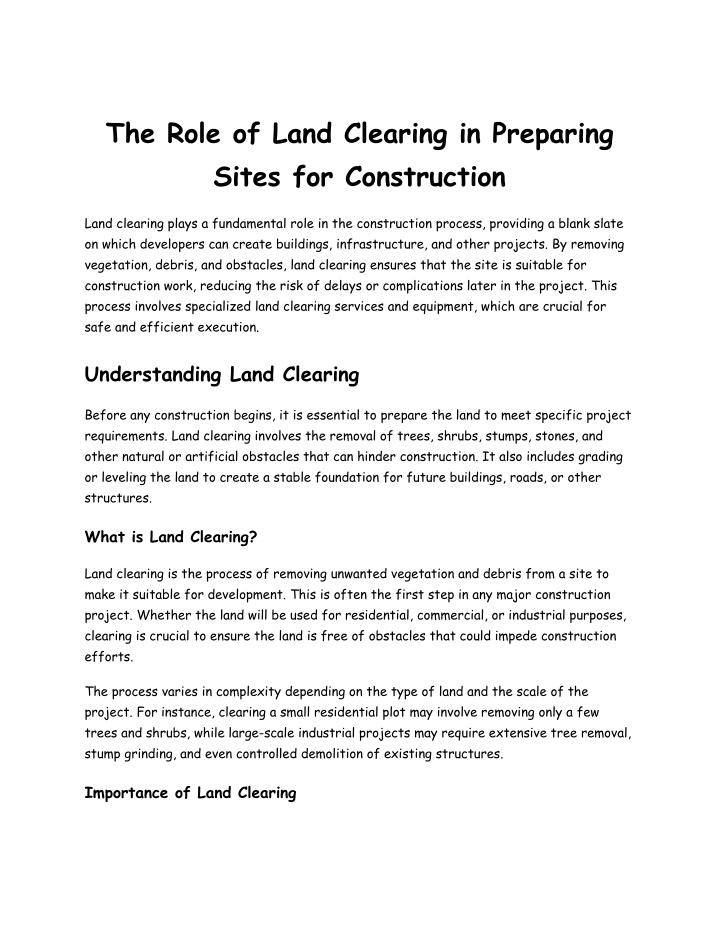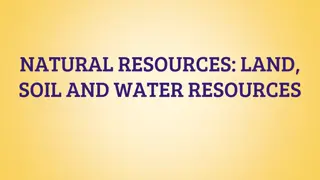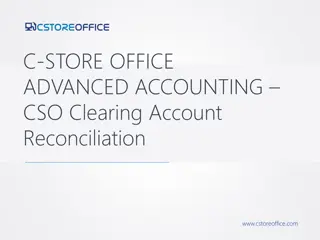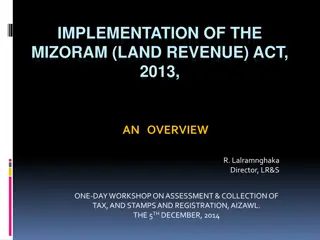
The Role of Land Clearing in Preparing Sites for Construction
Land clearing is the process of removing unwanted vegetation and debris from a site tonmake it suitable for development. This is often the first step in any major constructionnproject. Whether the land will be used for residential, commercial, or i
Download Presentation

Please find below an Image/Link to download the presentation.
The content on the website is provided AS IS for your information and personal use only. It may not be sold, licensed, or shared on other websites without obtaining consent from the author. If you encounter any issues during the download, it is possible that the publisher has removed the file from their server.
You are allowed to download the files provided on this website for personal or commercial use, subject to the condition that they are used lawfully. All files are the property of their respective owners.
The content on the website is provided AS IS for your information and personal use only. It may not be sold, licensed, or shared on other websites without obtaining consent from the author.
E N D
Presentation Transcript
The Role of Land Clearing in Preparing Sites for Construction Land clearing plays a fundamental role in the construction process, providing a blank slate on which developers can create buildings, infrastructure, and other projects. By removing vegetation, debris, and obstacles, land clearing ensures that the site is suitable for construction work, reducing the risk of delays or complications later in the project. This process involves specialized land clearing services and equipment, which are crucial for safe and efficient execution. Understanding Land Clearing Before any construction begins, it is essential to prepare the land to meet specific project requirements. Land clearing involves the removal of trees, shrubs, stumps, stones, and other natural or artificial obstacles that can hinder construction. It also includes grading or leveling the land to create a stable foundation for future buildings, roads, or other structures. What is Land Clearing? Land clearing is the process of removing unwanted vegetation and debris from a site to make it suitable for development. This is often the first step in any major construction project. Whether the land will be used for residential, commercial, or industrial purposes, clearing is crucial to ensure the land is free of obstacles that could impede construction efforts. The process varies in complexity depending on the type of land and the scale of the project. For instance, clearing a small residential plot may involve removing only a few trees and shrubs, while large-scale industrial projects may require extensive tree removal, stump grinding, and even controlled demolition of existing structures. Importance of Land Clearing
The primary importance of land clearing lies in its ability to prepare the land for safe and efficient construction. Uncontrolled vegetation can harbor pests, obstruct surveying, or even lead to accidents during the construction phase. Moreover, the removal of roots, stumps, and rocks prevents issues that could compromise the integrity of foundations and other structures. By addressing these potential problems early in the process, land clearing reduces risks and ensures that the project remains on schedule. It also makes room for essential infrastructure, including utility lines, roads, and drainage systems, which are critical to any development. Key Elements in Land Clearing Land clearing is more than just cutting down trees and removing debris; it requires meticulous planning and the use of specialized equipment. Land clearing services are typically provided by companies that specialize in this area, ensuring that all necessary precautions and environmental considerations are taken into account. Land Clearing Services Hiring a professional land clearing company is essential for ensuring the job is done efficiently and in compliance with local regulations. These companies offer a range of services tailored to the specific needs of the project and site conditions. Common services include: Tree removal: This involves cutting down and removing trees from the site. It may also include stump grinding and removal to ensure the land is completely cleared of obstacles. Brush clearing: Removing undergrowth and small vegetation that may obstruct surveying or construction. Debris removal: Collecting and disposing of natural and artificial debris that could impede progress. Grading and leveling: Adjusting the slope and level of the land to ensure a stable base for construction. Many land clearing companies also offer erosion control services, which are vital for preventing soil loss and environmental degradation during and after the clearing process.
The Role of a Land Clearing Company A land clearing company plays a critical role in the initial phases of construction. These professionals have the expertise and equipment necessary to clear a site effectively, minimizing delays and ensuring compliance with environmental laws. Depending on the project s scale, land clearing companies may also coordinate with engineers and environmental consultants to ensure that the land preparation meets all regulatory and safety standards. The efficiency of land clearing services is often tied to the equipment they use, as modern machinery allows for faster and safer removal of obstacles. Additionally, these companies are often equipped to handle environmentally sensitive areas, using methods that minimize damage to the surrounding ecosystem. Land Clearing Equipment Land clearing equipment is crucial for making the process efficient and safe. The types of equipment used will depend on the project s scale and the specific challenges posed by the land. Some of the most commonly used land clearing equipment includes: Bulldozers: Bulldozers are used for clearing large tracts of land. They can push over trees, remove stumps, and level the ground, making them invaluable for larger projects. Excavators: These machines are often used for digging up large rocks and stumps. Excavators can also help in grading the land and moving heavy debris. Mulchers: Mulchers are used to shred trees and brush into smaller, more manageable pieces, which can then be removed from the site or left in place as mulch. Stump Grinders: Once trees have been cut down, stump grinders are used to remove the stumps left behind. This prevents future issues with roots affecting the foundation of buildings. Chainsaws and Brush Cutters: For smaller or more precise clearing, chainsaws and brush cutters are ideal for removing trees and vegetation that are too small for larger equipment. In addition to this heavy machinery, land clearing crews often use specialized hand tools and safety gear to navigate difficult terrain and work in areas where machinery cannot operate.
Environmental Considerations in Land Clearing While land clearing is necessary for construction, it is important to consider the environmental impact of this process. Poorly managed clearing can lead to deforestation, soil erosion, and habitat destruction, which can have long-term ecological consequences. Erosion Control One of the primary environmental concerns during land clearing is the risk of erosion. Without proper measures, soil can be washed away by rain, leading to sedimentation in nearby water bodies and loss of fertile topsoil. To mitigate this risk, land clearing companies often employ erosion control strategies such as silt fences, terraces, and vegetation buffers to protect the soil during and after clearing. Sustainable Land Clearing Practices Many land clearing services are now adopting more sustainable practices, focusing on reducing the environmental footprint of the process. For instance, selective clearing removes only the trees and vegetation necessary for construction, leaving the rest of the ecosystem intact. Additionally, the use of mulchers allows for vegetation to be repurposed as mulch, which can help control erosion and improve soil quality. Conclusion Land clearing is a critical step in preparing sites for construction. It ensures that the land is free of obstacles, safe, and ready for development. Professional land clearing services, using specialized equipment, play an essential role in this process, ensuring that projects can proceed smoothly and efficiently. While land clearing can have environmental impacts, sustainable practices and erosion control measures help minimize these risks, allowing for responsible development. Whether for a small residential project or a large-scale industrial site, land clearing remains a key aspect of modern construction.






















